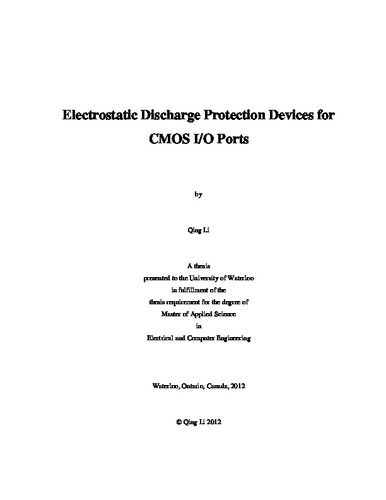| dc.description.abstract | In modern integrated circuits, electrostatic discharge (ESD) is a major problem that influences the reliability of operation, yield and cost of fabrication. ESD discharge events can generate static voltages beyond a few kilo volts. If these voltages are dissipated in the chip, high electric field and high current are generated and will destroy the gate oxide material or melt the metal interconnects. In order to protect the chip from these unexpected ESD events, special protection devices are designed and connect to each pin of the IC for this purpose. With the scaling of nano-metric processing technologies, the ESD design window has become more critical. That leaves little room for designers to maneuver. A good ESD protection device must have superior current sinking ability and also does not affect the normal operation of the IC.
The two main categories of ESD devices are snapback and non-snapback ones. Non-snapback designs usually consist of forward biased diode strings with properties, such as low heat and power, high current carrying ability. Snapback devices use MOSFET and silicon controlled rectifier (SCR). They exploit avalanche breakdown to conduct current.
In order to investigate the properties of various devices, they need to be modeled in device simulators. That process begins with realizing a technology specific NMOS and PMOS in the device simulators. The MOSFET process parameters are exported to build ESD structures. Then, by inserting ESD devices into different simulation test-benches, such as human-body model or charged-device model, their performance is evaluated through a series of figures of merit, which include peak current, voltage overshoot, capacitance, latch-up immunity and current dissipation time. A successful design can sink a large amount of current within an extremely short duration, while it should demonstrate a low voltage overshoot and capacitance. In this research work, an inter-weaving diode and SCR hybrid device demonstrated its effectiveness against tight ESD test standards is shown. | en |

